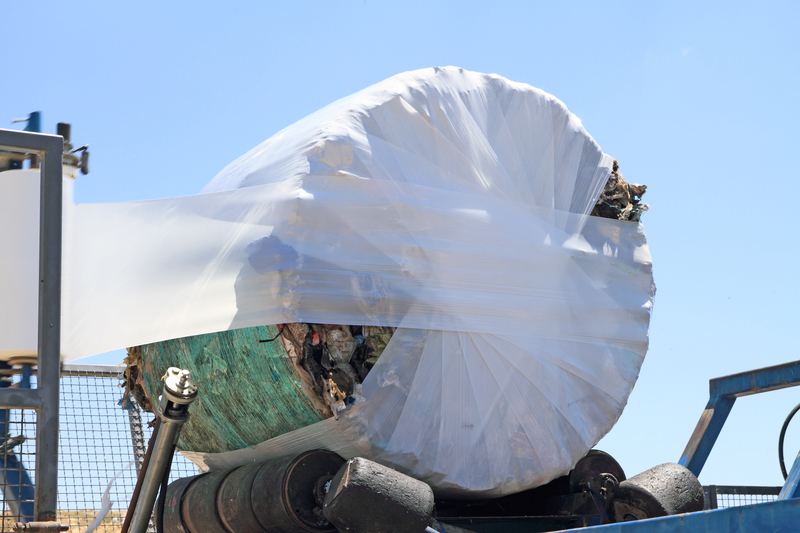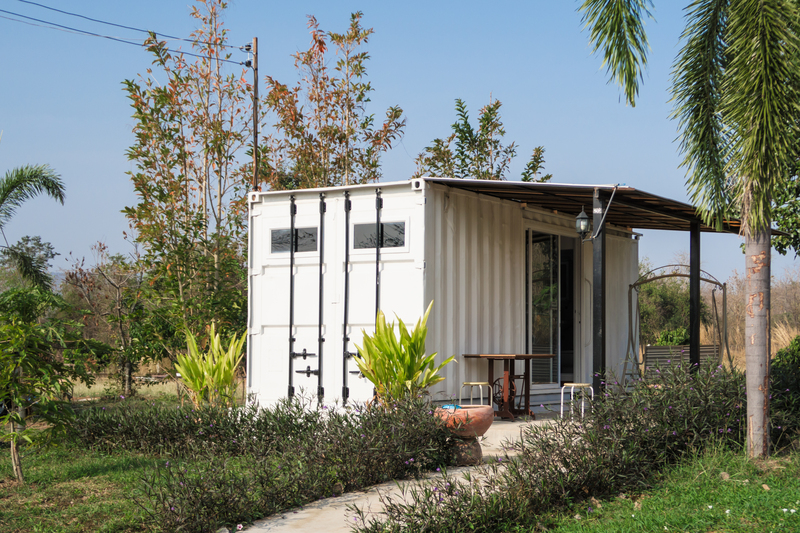Introduction to Identifying Waste That Qualifies as Hazardous
The proper identification of hazardous waste is critical for environmental protection, public health, and regulatory compliance. Whether you are a business owner, environmental professional, or simply interested in sustainable waste management, knowing how to recognize hazardous waste is essential. In this comprehensive guide, we will explore the various criteria, characteristics, and best practices for identifying waste that qualifies as hazardous, diving into the processes, regulations, and practical examples to equip you with everything you need to know.

What Is Hazardous Waste?
At its core, hazardous waste refers to any material that is discarded and poses substantial or potential threats to public health or the environment due to its chemical, physical, or biological properties. According to the Environmental Protection Agency (EPA), hazardous waste can encompass a range of items from industrial chemicals to everyday household products. The foundation for recognizing hazardous materials relies on their origin, composition, and potential effects.
Types of Hazardous Waste
- Listed Waste: Identified specifically by regulatory agencies as hazardous
- Characteristic Waste: Exhibits one or more hazardous traits like ignitability, corrosivity, reactivity, or toxicity
- Universal Waste: Includes widely produced hazardous products such as certain batteries and fluorescent bulbs
- Mixed Waste: Contains both radioactive and hazardous elements
Key Regulations Governing Hazardous Waste
Understanding how to identify waste that qualifies as hazardous depends heavily on both national and international regulations.
- Resource Conservation and Recovery Act (RCRA): In the United States, the RCRA gives the EPA the authority to control hazardous waste from "cradle-to-grave"--generation, transportation, treatment, storage, and disposal.
- Basel Convention: An international treaty that focuses on controlling hazardous waste movement across borders.
Individual states and countries often have their own definitions and lists, making it crucial for waste handlers to be familiar with local guidelines.
Criteria for Waste to Be Classified as Hazardous
Not all unwanted materials are hazardous. Identifying hazardous waste types involves careful evaluation against regulatory definitions using a combination of listing and characteristic tests. Below, we delve into the primary methods.
Listed Wastes: F-list, K-list, P-list, and U-list
The EPA maintains several lists of hazardous waste:
- F-list: Waste from common manufacturing processes (e.g., solvents used in cleaning).
- K-list: Waste from specific industries (e.g., petroleum refining, pesticide production).
- P-list and U-list: Discarded commercial chemical products, such as certain pharmaceuticals and pesticides.
If your waste appears on any of these lists, it automatically qualifies as hazardous.
Characteristic Wastes
Four primary characteristics are used to further identify hazardous waste:
- Ignitability: Can easily catch fire--for example, solvents or gasoline.
- Corrosivity: Capable of corroding metal containers--for example, acids and bases.
- Reactivity: Prone to explosion or release of toxic gases--for example, sodium, dynamite.
- Toxicity: Harmful when ingested or absorbed, as determined by specific laboratory tests (such as the Toxicity Characteristic Leaching Procedure or TCLP).
If a substance exhibits any of these hazardous characteristics, regardless of its origin, it must be managed as hazardous waste.
Step-by-Step Process for Identifying Hazardous Waste
- Determine if the Waste Is a Solid Waste: Not all solids are hazardous, but only solid waste (which may also include liquids, semi-solids, or containerized gases) can be hazardous.
- Consult Regulatory Lists: Check if the waste appears on any local or federal hazardous waste lists.
- Evaluate Hazardous Characteristics: Conduct laboratory tests for ignitability, corrosivity, reactivity, and toxicity.
- Review Exclusions: Some materials may appear hazardous but are excluded, such as certain household wastes, agricultural wastes, or mining byproducts.
- Document Findings: Maintain accurate records and manifest documents for compliance and safety audits.
Common Examples of Hazardous and Non-Hazardous Waste
Hazardous Waste Examples
- Used motor oils and spent solvents
- Pesticides and insecticides
- Lead-acid batteries
- Certain cleaning agents and disinfectants
- Pharmaceuticals (some expired or unused drugs)
- Paints, varnishes, and their residues
Non-Hazardous Waste Examples
- Food scraps and organic waste
- Paper, cardboard, plastics (unless contaminated)
- Glass and certain metals
- Yard trimmings
Remember, mixed or contaminated wastes may shift categories and should always be assessed accordingly.
Tools and Tests for Identifying Hazardous Waste
Laboratories and inspectors use specialized analytical techniques and field kits that help in determining hazardous properties. Some common methods include:
- Flash Point Testing: For ignitability, using closed cup testers.
- pH Measurement: For detecting corrosivity, with calibrated electrodes.
- TCLP (Toxicity Characteristic Leaching Procedure): To evaluate the concentration of contaminants likely to leach into the environment.
- Reactivity Testing: Assessing a waste's response to chemical or physical stimuli such as shock, heat, or mixing with water.
The Consequences of Misidentifying Hazardous Waste
Misclassification can have severe repercussions:
- Legal Penalties: Violating waste management laws can result in substantial fines and criminal charges.
- Environmental Damage: Inappropriate disposal may cause pollution, affecting soil, water, and air quality.
- Public Health Risks: Exposure may lead to toxicity, respiratory problems, or chronic diseases.
- Business Impact: Loss of reputation and potential business interruptions.
For this reason, the importance of accurately identifying hazardous waste cannot be overstated.
Best Practices for Staying Compliant and Safe
- Stay Informed: Regularly review updates from regulatory bodies.
- Train Staff: Educate employees on proper waste characterization and safe handling.
- Keep Records: Maintain thorough documentation of all hazardous waste activities.
- Engage Certified Laboratories: For complex or questionable waste streams, consult professionals.
- Implement Clear Labeling: Properly label all waste containers as hazardous or non-hazardous.
By adopting these best practices for hazardous waste identification, you minimize risks and ensure you're upholding legal and ethical standards.
Industry-Specific Considerations
Different industries generate unique types of hazardous waste. Some examples include:
- Manufacturing: Heavy metals, solvents, acids
- Healthcare: Infectious medical wastes, pharmaceuticals, radiological materials
- Automotive: Oils, antifreeze, batteries
- Construction: Asbestos, paints, adhesives
- Agriculture: Pesticides, herbicides, veterinary drugs
Each sector must tailor its identification processes to the specific waste streams it produces.
Emerging Trends in Hazardous Waste Identification
- Digital Tracking: Software solutions for real-time waste inventory and reporting.
- Green Chemistry: Designing processes to minimize or eliminate hazardous wastes altogether.
- Automation: Robotic and sensor-based systems for faster, safer identification.

Frequently Asked Questions
1. What should I do if I am unsure whether a waste qualifies as hazardous?
If uncertain, consult the latest regulatory lists and consider laboratory characterization. When in doubt, treat the waste as hazardous until proven otherwise, or contact your local environmental agency for guidance.
2. Can household products be hazardous waste?
Yes. Items like paints, batteries, and cleaning agents often exhibit hazardous characteristics and require proper disposal methods.
3. Why is it important to correctly identify hazardous waste?
Accurate identification protects human health, preserves the environment, ensures compliance with the law, and prevents costly penalties.
Conclusion: The Importance of Accurate Hazardous Waste Identification
Correctly identifying waste that qualifies as hazardous is a cornerstone of effective environmental stewardship and legal compliance. It involves understanding definitions, recognizing characteristic properties, referring to regulatory lists, and, when necessary, conducting scientific analysis. While the process may seem daunting, it is absolutely vital for anyone generating, transporting, or managing waste materials.
By integrating robust identification protocols and staying informed on regulations, you can safeguard your business, community, and the planet from the risks posed by hazardous waste.
Further Resources
- EPA: Learn the Basics of Hazardous Waste
- OSHA: Hazardous Waste Operations and Emergency Response
- Basel Convention Official Website
Take a proactive approach to identifying waste that qualifies as hazardous - it's your responsibility and your legacy.